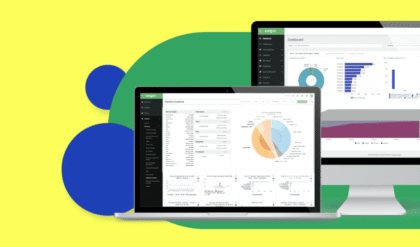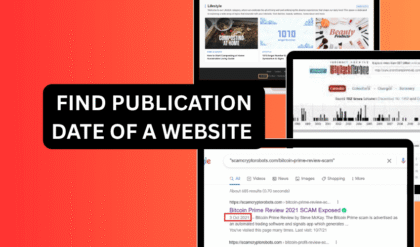GPS tracking has revolutionized the way fleet managers oversee their operations, offering real-time insights that directly boost driver performance. In today’s fast-paced world of logistics and transportation, where efficiency can make or break a business, implementing GPS tracking systems isn’t just a tech upgrade, it’s a game-changer for empowering drivers to work smarter, safer, and more productively. Whether you’re managing a delivery service, a construction crew, or a sales team on the road, understanding how GPS tracking enhances driver capabilities can lead to measurable improvements in your bottom line.
![]()
What is GPS Tracking and Why Does It Matter for Drivers?
At its core, GPS tracking involves using satellite technology to pinpoint the exact location of vehicles in real time. But it’s more than just dots on a map—modern systems integrate with software that provides data on speed, routes, fuel usage, and even driver behavior. For drivers, this means they’re not flying blind; they have tools that guide them toward better decisions on the road.
Imagine a driver navigating through heavy traffic without any guidance. Delays pile up, fuel is wasted, and frustration builds. With GPS tracking, routes are optimized based on live traffic data, helping drivers avoid bottlenecks and arrive on time. This not only reduces stress but also builds confidence, as drivers know they’re backed up by accurate, up-to-the-minute information.
6 Ways GPS Tracking Enhances Driver Skills
Discover how GPS tracking boosts driver performance with real-time route optimization, enhanced safety, and improved accountability. Learn practical ways to increase efficiency and reduce costs for your fleet.
Boosting Efficiency Through Route Optimization
One of the most immediate ways GPS tracking helps drivers perform better is by streamlining their routes. Traditional mapping might get you from point A to B, but GPS systems analyze multiple factors like road conditions, weather, and historical data to suggest the fastest or most efficient path.
For instance, if a driver is making multiple stops, the system can reorder deliveries to minimize backtracking. This saves time and reduces mileage, which in turn lowers vehicle wear and tear. Driver’s report feels more accomplished at the end of the day because they’re completing more tasks without unnecessary detours. In fact, businesses using it often see a 10-20% reduction in travel time, allowing drivers to focus on quality service rather than rushing.
Enhancing Safety and Reducing Risks
Safety is paramount in any driving role, and GPS tracking plays a crucial role in promoting safer habits. By monitoring speed, harsh braking, and acceleration patterns, these systems provide feedback that encourages responsible driving.
Drivers receive alerts for speeding or unsafe maneuvers, helping them correct behaviors in real time. Over time, this leads to fewer accidents and lower insurance premiums for the company. In emergencies, it enables quick location sharing with responders, giving drivers peace of mind that help is just a signal away. It’s like having a vigilant co-pilot who prioritizes well-being above all.
Improving Accountability and Motivation
GPS tracking isn’t about micromanaging—it’s about fostering accountability that motivates drivers to excel. When drivers know their performance is tracked objectively, they’re more likely to adhere to best practices, like taking scheduled breaks to avoid fatigue.
Managers can use the data to recognize top performers, perhaps through incentives for efficient routes or safe driving streaks. This positive reinforcement turns data into a tool for growth, helping drivers identify areas for improvement without feeling criticized. The result? A more engaged workforce that’s invested in their own success.
Cutting Costs and Environmental Impact
From a driver’s perspective, GPS tracking means less time idling in traffic or searching for addresses, which directly translates to fuel savings. Systems can even suggest eco-friendly routes that minimize emissions, aligning with modern sustainability goals.
Drivers appreciate this because it makes their job greener and more cost-effective. For example, idle time tracking encourages turning off engines during stops, reducing fuel consumption by up to 15%. This not only helps the planet but also eases the financial burden on companies, potentially leading to better pay or bonuses for drivers.
Real-World Examples of GPS Tracking in Action
Take a local delivery company that switched to GPS tracking: Their drivers reduced average route times by 25%, leading to happier customers and less overtime. Or consider long-haul truckers who use the technology to monitor fatigue levels through integrated apps, ensuring they stay alert and compliant with regulations.
These stories highlight how GPS tracking isn’t theoretical—it’s practical, delivering tangible results that drivers can see and feel in their daily routines.
Integrating GPS Tracking Seamlessly into Your Operations
Getting started with GPS tracking is simpler than you might think. Choose a user-friendly system that offers mobile apps for drivers, so they can access routes and updates on their phones. Training sessions can help demystify the tech, turning potential skeptics into advocates.
Remember, the key is communication: Explain how GPS tracking benefits everyone, from safer roads to better work-life balance. When drivers understand it’s a tool for empowerment, adoption rates soar.
Conclusion
GPS tracking empowers drivers to perform at their best by providing the insights and support they need to navigate challenges efficiently. By embracing this technology, businesses not only enhance productivity but also create a safer, more motivated driving team. If you’re looking to elevate your fleet’s performance, investing in GPS tracking could be the smartest move you make.
FAQs
What exactly is GPS tracking, and how does it work for vehicles?
It uses satellites to determine a vehicle’s location, speed, and direction. For drivers, it integrates with apps or dashboards to offer real-time guidance, making daily tasks more manageable.
Can GPS tracking really improve driver safety?
Absolutely. It monitors behaviors like speeding or sudden stops and sends alerts, helping drivers build safer habits and reducing accident risks.
How does it affect driver privacy?
Reputable systems focus on work-related data only, with clear policies on usage. It’s designed to support, not invade, ensuring drivers feel secure.
Is it expensive to implement?
Costs vary, but the ROI from fuel savings and efficiency gains often outweighs the initial investment. Many providers offer scalable plans for small businesses.
Will GPS tracking make drivers feel monitored?
When introduced positively, it shifts the focus to benefits like route help and recognition, turning it into a motivational tool rather than surveillance.





